Given the FillTextSolid() method shown before in:
Graphics DrawPath produces unexpected results when rendering text
Private Sub FillTextSolid(g As Graphics, bounds As RectangleF, text As String, font As Font, fillColor As Color)
Using gp As GraphicsPath = New GraphicsPath(),
brush As New SolidBrush(fillColor),
format = New StringFormat(StringFormat.GenericTypographic)
format.Trimming = StringTrimming.EllipsisWord
gp.AddString(text, font.FontFamily, font.Style, font.Size, bounds, StringFormat.GenericTypographic)
g.FillPath(brush, gp)
Dim lastCharPosition = GetPathLastCharPosition(g, format, gp, bounds, text, font)
End Using
End Sub
you can use the current GraphicsPath, Rectangle bounds, Font size and style used for drawing the the text in a graphics context, to calculate the position of the last character drawn and, as a consequence, the last word, if necessary.
I've added in FillTextSolid() a call to the GetPathLastCharPosition() method, which is responsible for the calculation. Pass to the method the objects described, as they're currently configured (these settings can of course change at any time: see the animation at the bottom).
Dim [Last Char Position] = GetPathLastCharPosition(
[Graphics],
[StringFormat],
[GraphicsPath],
[RectangleF],
[String],
[Font]
)
To determine the current last word printed using a GraphicsPath object, you cannot split the string in parts separated by, e.g., a white space, since each char is part of the rendering.
Also to note: for the measure to work as intended, you cannot set the drawing Font size in Points, the Font size must be expressed in pixels.
You could also use Point units, but the GraphicsPath class, when Points are specified, generates (correctly) a Font measure in EMs - considering the Font Cell Ascent and Descent - which is not the same as the Font.Height.
You can of course convert the measure from Ems to Pixels, but it just adds complexity for no good reason (in the context of this question, at least).
See a description of these details and how to calculate the GraphicsPath EMs in:
Properly draw text using GraphicsPath
GetPathLastCharPosition() uses Graphics.MeasureCharacterRanges to measure the bounding rectangle of each char in the Text string, in chunks of 32 chars per iteration. This is because StringFormat.SetMeasurableCharacterRanges only takes a maximum of 32 CharacterRange elements.
So, we take the Text in chunks of 32 chars, get the bounding Region of each and verify whether the Region contains the last Point in the GraphicsPath.
The last Point generated by a GraphicsPath is returned by the GraphicsPath.GetLastPoint().
- This procedure only considers text drawn from top to bottom and left to right.
It can be adapted to handle right to left languages.
Of course, you could also ignore the last point and just consider whether a Region bounds fall outside the bounding rectangle of the canvas.
Anyway, when the a Region that contains the last point is found, the method stops and returns the position of the last character in the string that is part of the drawing.
Private Function GetPathLastCharPosition(g As Graphics, format As StringFormat, path As GraphicsPath, bounds As RectangleF, text As String, font As Font) As Integer
Dim textLength As Integer = text.Length
Dim p = path.GetLastPoint()
bounds.Height += font.Height
For charPos As Integer = 0 To text.Length - 1 Step 32
Dim count As Integer = Math.Min(textLength - charPos, 32)
Dim charRanges = Enumerable.Range(charPos, count).Select(Function(c) New CharacterRange(c, 1)).ToArray()
format.SetMeasurableCharacterRanges(charRanges)
Dim regions As Region() = g.MeasureCharacterRanges(text, font, bounds, format)
For r As Integer = 0 To regions.Length - 1
If regions(r).IsVisible(p.X, p.Y) Then
Return charRanges(r).First
End If
Next
Next
Return -1
End Function
This is how it works:

C# version of the method:
private int GetPathLastCharPosition(Graphics g, StringFormat format, GraphicsPath path, RectangleF bounds, string text, Font font)
{
int textLength = text.Length;
var p = path.GetLastPoint();
bounds.Height += font.Height;
for (int charPos = 0; charPos < text.Length; charPos += 32) {
int count = Math.Min(textLength - charPos, 32);
var charRanges = Enumerable.Range(charPos, count).Select(c => new CharacterRange(c, 1)).ToArray();
format.SetMeasurableCharacterRanges(charRanges);
Region[] regions = g.MeasureCharacterRanges(text, font, bounds, format);
for (int r = 0; r < regions.Length; r++) {
if (regions[r].IsVisible(p.X, p.Y)) {
return charRanges[r].First;
}
}
}
return -1;
}
